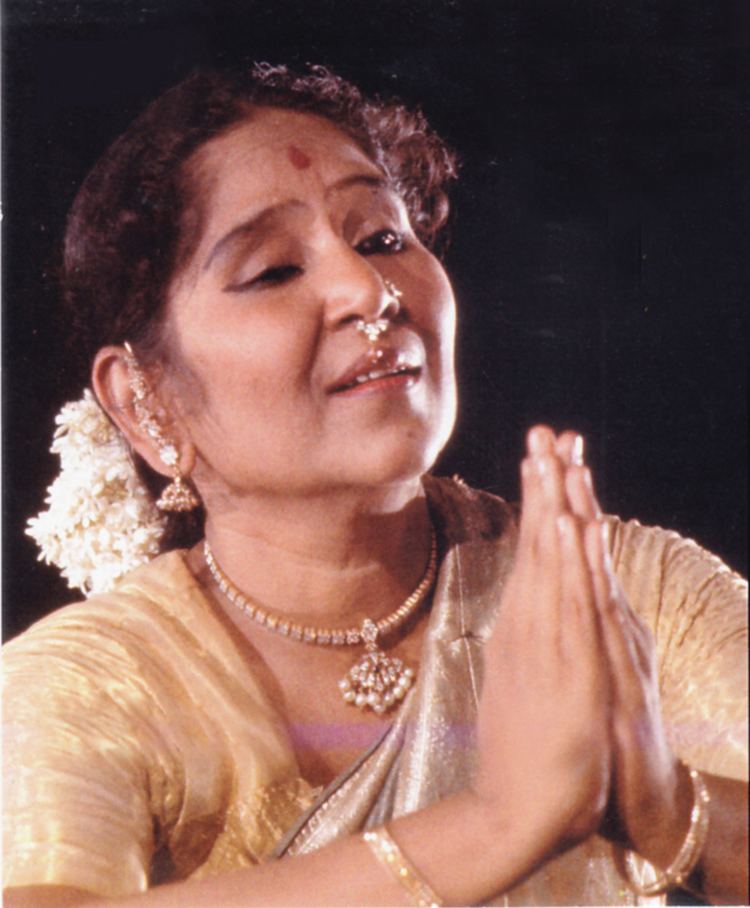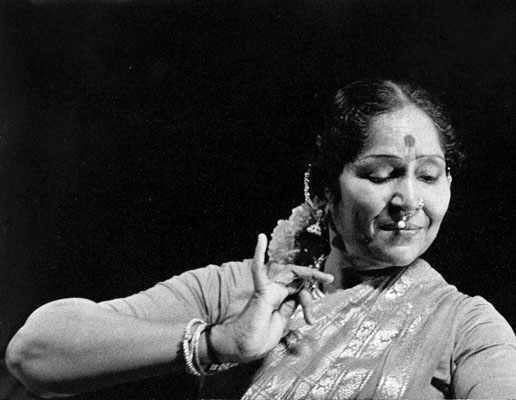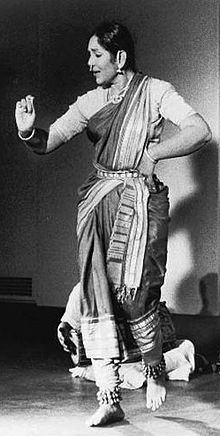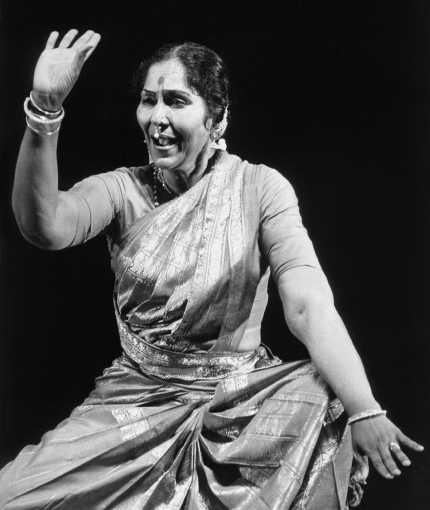Origin Tanjore Years active 1925-1984 Children Lakshmi Knight Role Dancer | Name Tanjore Balasaraswati Died February 9, 1984, Chennai Parents Jayammal | |
 | ||
Genres Carnatic classical music Siblings T. Viswanathan, T. Ranganathan Nephews Suddhama Ranganathan, Arun Ranganathan Similar People T Viswanathan, T Ranganathan, Satyajit Ray, Muthuswami Dikshitar | ||
Balasaraswati singing dancing krishna nee begane baaro
Tanjore Balasaraswati, also known as Balasaraswati (13 May 1918 – 9 February 1984), was a celebrated Indian dancer, and her rendering of Bharatanatyam, a classical dance style originated in the South Indian state of Tamil Nadu, made this style of dancing well known in different parts of India and many parts of the world.
Contents
- Balasaraswati singing dancing krishna nee begane baaro
- Bala 1976 Satyajit Ray Documentary on T Balasaraswati
- Early life and background
- Career
- In popular culture
- References

She was awarded the Padma Bhushan in 1957 and the Padma Vibhushan in 1977, the third and the second highest civilian honours given by the Government of India. In 1981 she was awarded the Sangeetha Kalasikhamani award of The Indian Fine Arts Society, Chennai.

Bala (1976) - Satyajit Ray Documentary on T. Balasaraswati
Early life and background

Balasaraswati was a seventh generation representative of a traditional matrilineal family of temple musicians and dancers (devadasis, who traditionally enjoyed high social status), who have been described as the greatest single repository of the traditional performing arts of music and dance of the southern region of India [("Balasaraswati" by V.K. Narayana Menon)]. Her ancestor, Papammal, was a musician and dancer patronized in the mid-eighteenth century by the court of Thanjavur. Her grandmother, Vina Dhanammal (1867–1938), is considered by many to be the most influential musician of the early twentieth century. Her mother, Jayammal (1890–1967) was a singer who encouraged the training of Balasaraswati and was her accompanist.
Balasaraswati created a revolution in traditional music and dance for bharata natyam, a combination of the performance arts of music and dance. She learned music within the family from her infancy, and her rigorous training in dance was begun when she was four under the distinguished dance teacher K. Kandappan Pillai, a member of the famed Thanjavur Nattuvanar family. Her younger brothers were the musicians T. Ranganathan and T. Viswanathan who would both become prominent performers and teachers in India and the United States. Her daughter, Lakshmi Knight (1943–2001), became a distinguished performer of her mother's style. Her grandson Aniruddha Knight continues to perform the family style today, and is artistic director of Bala Music and Dance Association in the United States and the Balasaraswati School of Dance in India. Her son-in-law Douglas M. Knight, Jr. has written her biography with the support of a Guggenheim Fellowship (2003). Famous Indian film maker Satyajit Ray made a documentary on her works.
Career
Balasaraswati's debut took place in 1925. She was the first performer of her traditional style outside of South India, performing first in Calcutta in 1934. As a young teenager, she was seen by choreographer Uday Shankar, who became an ardent promoter of her performances, and throughout the 1930s she captured the imagination of audiences across India. She went on to a global career that attracted international critical attention and the respect of dance greats such as Shambhu Maharaj, Dame Margot Fonteyn, Martha Graham, and Merce Cunningham. Interest in bharata natyam rebounded in the 1950s as the public became interested in promoting a unique Indian art form. Balasaraswati, encouraged by an administrator at the Music Academy in Madras, established a dance school in association with the institution. There she trained new dancers in bharata natyam as per her vision. In the early 1960s she increasingly travelled globally, with performances in East Asia, Europe, and North America. Later that decade, throughout the 1970s, and into the early 1980s, she visited the United States repeatedly and held residencies—as both a teacher and a performer—at Wesleyan University (Middletown, Connecticut), California Institute of the Arts (Valencia), Mills College (Oakland, California), the University of Washington (Seattle), and Jacob’s Pillow Dance Festival (Beckett, Massachusetts), among other institutions. Through her international engagements as well as her activities in India, especially in Madras, Balasaraswati not only exposed countless audiences to the traditional style of bharata natyam but also trained many new practitioners of the art form.

She received numerous awards in India, including the President's Award from the Sangeet Natak Akademi (1955), Padma Vibushan from the Government of India for distinguished national service (1977) and Sangita Kalanidhi from the Madras Music Academy, South India's highest award for musicians (1973). In a review in 1977, the New York Times dance critic Anna Kisselgoff described her as one of the "supreme performing artists in the world". India Today, one of the leading news magazine of India, based on a survey, classified her as one of the 100 prominent Indians who have shaped the destiny of India. She was the only non-western dancer included in a compilation of the Dance Heritage Coalition, "America's Irreplaceable Dance Treasures: The First 100" (2000).
In popular culture
Bengali film director Satyajit Ray made a documentary film on Balasaraswati named Bala (1976).
